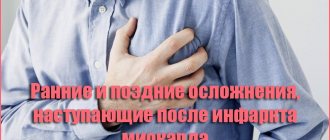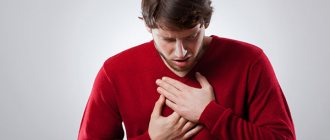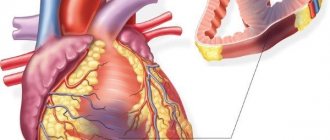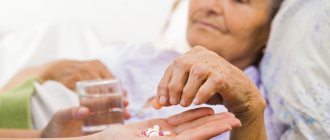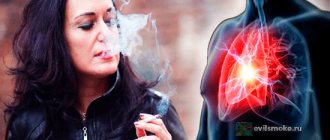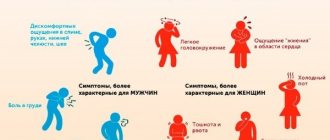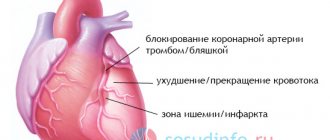A heart attack is a severe cardiac disease in which the death of myocardial tissue is observed. This process occurs against the background of oxygen starvation in the cells caused by lack of blood circulation. Even with the development of modern cardiology, mortality from heart attacks remains very high. According to this indicator, this pathology leads among all diseases of the cardiovascular system. Therefore, people at risk need to know how to prevent a heart attack. To do this, you need to adhere to certain medical recommendations.
How to prevent the development of myocardial infarction
Coronary heart disease, as well as its consequence, myocardial infarction, is considered a by-product of civilization. In third world countries, heart pathologies are much less common. The industrial and information age has brought significant changes in lifestyle, but this comes with a death sentence. Everyone has the ability to influence their own health.
The concept of risk groups
Not all people have the same chance of developing a myocardial infarction. There are certain factors that, although they do not directly cause a heart attack, significantly increase the risk. These include:
- gender – it is much more difficult to avoid a heart attack in men than in women;
- age – older people are at greater risk;
- overweight;
- alcohol abuse and smoking;
- physical inactivity;
- constant emotional stress;
- complicated heredity - if there have already been similar cases in the family, then the risk of a heart attack is higher;
- associated diseases - arterial hypertension, diabetes mellitus, atherosclerosis, heart defects, rheumatism and others.
We cannot influence some of these factors, but, for example, physical activity or bad habits are completely within our control.
Primary prevention measures
Primary prevention is indicated for those who have not yet encountered heart problems, but are included in any of the risk groups listed above. Typically, recommendations include lifestyle changes and treatment of existing diseases:
regular physical activity - at least twice a week, aerobic training is best;- balanced diet - 4-5 meals a day, at the same time, and limit foods high in carbohydrates and fats, giving preference to fruits and vegetables;
- cessation of drinking alcohol and smoking - a safe dose of alcoholic beverages (in terms of pure alcohol) is about 30 ml for men and 20 ml for women per day;
- avoiding emotional overload - good rest, healthy sleep, physical activity, meditation, auto-training and consultations with a psychotherapist will help you with this;
- periodic medical examinations - visit a doctor at least once a year, this will allow you to identify pathological changes in the early stages;
- treatment of concomitant diseases - it is very important to control diabetes, high blood pressure and other diseases that lead to a heart attack.
Bad habits
Giving up bad habits can be considered one of the main ways to prevent a heart attack. Smokers do not agree that nicotine causes heart attacks; they argue that there is no direct evidence of this. However, there is direct evidence that cigarettes provoke a narrowing of the lumen of blood vessels, and this increases the risk of heart attack. Therefore, heart attack prevention includes quitting smoking.
It's more difficult with alcohol. Of course, calling alcoholics healthy people can only be done in an ironic context, but small doses of alcohol have a positive effect on blood vessels. A person who drinks a few sips of dry wine during lunch or dinner is less likely to suffer from atherosclerosis. But our mentality often requires “continuing the banquet.” It is difficult to stop after a few sips of wine, and alcohol abuse begins. As a result, the person becomes an alcoholic and dies from cirrhosis of the liver. Do you need it?
What is secondary prevention
Secondary prevention is necessary for those patients who have already experienced myocardial infarction. In such people, even after successful treatment and rehabilitation, the risk of a second attack is very high, since irreversible changes have already occurred in the heart.
Secondary prevention includes all of the above primary measures, but now everything is under strict medical supervision. Exercising too hard can only make the situation worse. In addition to non-medicinal means, in this case taking medications is indicated.
The following drugs are used to prevent myocardial infarction:
- antianginal (Nitroglycerin, Sustak) - help prevent angina attacks;
- antiplatelet agents (Aspirin, Clopidogrel) - they help prevent thrombosis;
- antiarrhythmic (Novocainamide, Amiodarone) - for the treatment of arrhythmias;
- antihypertensive drugs (beta blockers, ACE inhibitors, diuretics) - to lower blood pressure;
- cardiotonics (Digoxin, Korglykon) - to improve heart function;
- statins (Atorvastatin) – reduce cholesterol synthesis.
Patients with coronary heart disease (CHD) are recommended to periodically undergo a course of treatment and additional examination in a hospital. You should also see a doctor when symptoms begin to appear more frequently.
Balanced diet
Large feasts, overeating, fatty dishes, fried meat, buns and sweets are the daily diet for many. But prevention of heart attack in this area is aimed at switching to a balanced diet. A person should get the required amount of protein, but at the same time avoid fatty foods, choosing dietary meats (chicken breast, turkey, rabbit). The diet should contain a large amount of vegetables and fruits. In addition, attention is paid to the vitamin content of products. It is advisable to diversify your diet so that you receive the maximum amount of microelements and vitamins from your diet.
How often should you see a doctor to avoid complications?
It all depends on the functional class of heart failure, which is determined by the doctor using stress tests.
Patients of the first two classes need to visit a cardiologist at least once every 4-6 months. For patients with the third and fourth - every month.
For those who have already suffered a heart attack, there is the following scheme:
- the first month after the attack - every week;
- second to sixth months - once every 2 weeks.
- next six months – once a month;
- the second year and beyond - quarterly.
Self-control
To prevent a heart attack, it is important to learn to control emotions in stressful conditions, avoid depression and follow a routine. The ability to calm down in time, as they say, “not to take problems to heart,” not to harbor resentment and not to accumulate anger is very important for a person who thinks about his health. Excessive stress leads to vasospasm, which reduces blood supply to the heart muscle. This increases the risk of heart attack.
What examinations need to be performed for early diagnosis?
In addition to standard tests and ECG, it is recommended to use the following diagnostic procedures:
- echocardiography;
- functional stress tests;
- Holter ECG monitoring;
- glycemic profile;
- biochemical blood test for cholesterol, ischemia markers.
It is also recommended to monitor your blood pressure and pulse daily. If any alarming symptoms appear (acute pain, shortness of breath, causeless cough, sudden weakness), you should immediately call an ambulance.
Help from traditional medicine
Traditional medicine cannot replace taking aspirin or statins, but it can significantly reduce the risk of heart attack. So, to reduce cholesterol levels, a special alcohol infusion is used, which contains:
- half a glass of dried radish peel (black);
- half a glass of dried horseradish leaves;
- one pod of dried red pepper;
- several handfuls of walnut partitions.
All components are poured with alcohol and infused in the dark for 2 weeks. The composition is used for rubbing.
An infusion of white willow bark is highly effective. Its action is similar to Aspirin, but does not completely replace taking this drug.
To lower cholesterol, you can drink a decoction of herbs with honey. The collection includes: chamomile, St. John's wort, immortelle, birch buds. Brew a tablespoon of the mixture into 0.5 liters of boiling water. The product is infused for several hours before use.
Everyone can maintain healthy blood vessels and heart. The simple recommendations outlined in the article will help you avoid such troubles as a second heart attack. Prevention and treatment are very important for the patient, so they should not be neglected. A heart attack is not a death sentence. With the right attitude towards your body, you can ultimately achieve a rich and long life.
Use of ACE inhibitors
How to prevent stroke and heart attack with severe left ventricular dysfunction? For prophylaxis, patients are prescribed angiotensin-converting enzyme inhibitors. These drugs eliminate the symptoms of arterial hypertension, heart failure, and proteinuria, which is especially important for people with diabetes.
Clinical trials confirm the effectiveness of the use of ACE inhibitors for the prevention of myocardial infarction and ischemic stroke; a significant reduction in the development of acute attacks with further hospitalization was noted. For high blood pressure and symptoms of heart failure, ACE inhibitors are used together with potassium-sparing diuretics (Indapamide, Amiloride).
Antiplatelet agents
Antiplatelet drugs are directed against another cause of myocardial infarction – blood clots. This group of drugs thins the blood and prevents its clotting.
- Aspirin cardio (acetylsalicylic acid). Dosage -100 mg, cost -130-200 rubles
- Doxy-chem (calcium dobesylate). Packaging: 500 mg, can be purchased at a pharmacy for 240 rubles
- Cardiomagnyl (acetylsalicylic acid magnesium hydroxide). Dosage 150 mg, price – 300 rubles
Contraindications: high risk of bleeding, hemorrhagic diathesis, liver failure.
Side effects: erosion and gastric ulcers, bleeding, leukopenia, thrombocytopenia.
Antiplatelet agents are usually prescribed one tablet per day for a long time.
ACEI drugs
The attending physician may prescribe angiotensin-converting enzyme inhibitors to a patient after a myocardial infarction.
Thanks to these medications, blood pressure decreases and blood vessels dilate. The body synthesizes the substance angiotensin.
It is ACE inhibitors that influence the synthesis of this important biologically active substance. It affects the functions of the heart. The action of ACEI is also aimed at blocking the negative transformation of the structure of the heart muscle, because some of its areas have undergone necrosis due to MI.
During a heart attack, the ventricles of the heart undergo negative changes. Therefore, for normal operation, the heart tries to change its geometry. This is achieved by expanding the cavities. The cuts are no longer effective. Heart failure occurs. Taking an ACE inhibitor helps prevent structural changes in the organ. This reduces the possibility of developing heart failure. Usually, taking an ACEI is indicated for all people who have experienced an MI. But only if there are no contraindications. These drugs can save the life of a person who has suffered a myocardial infarction.
About taking medications
Our body begins to send alarm bells, which are expressed in pain symptoms in the heart area.
This is how IHD or coronary heart disease develops. If measures are not taken in a timely manner and treatment is not started, foci of necrosis may occur in the myocardial tissue. It is this condition that is commonly called myocardial infarction. Myocardial infarction requires urgent medical attention. Delay can lead to very disastrous consequences.
And after relief of the acute condition, the patient needs further long-term and systematic treatment. Most likely, the patient will have to completely reconsider his lifestyle and take certain medications for many years.
Drug treatment after myocardial infarction should be prescribed strictly by a cardiologist; usually the specialist prescribes drugs from several groups.
Nitro drugs
Nitrodrugs relieve pain due to angina pectoris. Nitroglycerin is a first aid remedy for chest pain. Also, nitro drugs dilate blood vessels and stabilize blood pressure.
- Nitroglycerin (active substance nitroglycerin). Dosage forms can be different: tablets for oral administration, sublingual, ointments, patches on the skin or gums. There are many analogue drugs: trinitrolong, sustak, nitro mac retard, nitro pol, nitro ointment and others. The cost of these drugs varies greatly from 15 rubles and more.
- Isoket, cardiquet, isomac (active ingredient isosorbide dinitrate)
- Mono mac, cardix mono, olicard, monocinque, efox (active substance isosorbide mononitrate)
They take nitro drugs to relieve and prevent pain due to angina pectoris.
Side effects: dizziness, drop in blood pressure, headache, increased heart rate, weakness; addiction to drugs in this group often develops, as a result of which their effect decreases, withdrawal syndrome occurs.
Beta blockers
Often, patients with heart failure develop an increased heart rate - tachycardia. Beta blockers normalize pulse and lower blood pressure. This reduces the load on the heart muscle.
1st generation beta blockers include:
- Anaprilin, nolotene, propamine (active ingredient proprapnolol)
- Sandinorm (bopindolol)
- Korgard (nadolol)
- Trazicor (oxprenalol)
- Sotalex (sotalol)
- Glucomol (timolol).
2nd generation beta blockers:
- Atenobene, tenolol (active ingredient atenolol)
- Glaox, locrene (betaxolol)
- Nebilet, binelol (nebivolol)
- Betaloc, vasocardin (metaprolol)
- Cordanum (talinolol).
3rd generation beta blockers:
- Recardium, acridilol (active substance carvedilol)
- Celipres (celiprolol).
The dosage, methods of use and cost of these medications vary greatly.
Contraindications for use are: low blood pressure, bronchial asthma, bradycardia, various vascular pathologies.
Side effects: peripheral vascular spasm, weakness, bronchospasm, headache, dizziness, allergic reactions, withdrawal syndrome.
Symptoms and signs of heart attack in men, its consequences
Men are more susceptible to developing a heart attack. In women, before the onset of menopause, the health of the cardiovascular system is supported by the hormone estrogen, so heart attacks in them at a young age occur much less often.
The main reason for the development of a heart attack is obstruction of the coronary vessels and cessation of blood flow.
If blood does not flow to the heart, cells do not receive oxygen and nutrients. Such conditions lead to the death of cardiomyocytes. The longer the heart is exposed to hypoxia, the more cells die.
The reasons that lead to blockage of coronary vessels are different. In men it is most often:
- Vascular atherosclerosis. This is a disease characterized by the deposition of cholesterol in the vascular cavity. At a certain stage of the disease, an atherosclerotic plaque appears, narrowing the vascular lumen. If the plaque is localized in the coronary arteries, it can cause a heart attack. Atherosclerosis is the most common cause of pathology in men over 60 years of age.
- Presence of a blood clot. A blood clot in the coronary arteries can also cause obstruction. The cause of blood clots is increased blood clotting. This is typical for varicose veins, thrombophlebitis, and thrombosis.
- Spasm of cardiac vessels. Entry of an embolus. Embolism is a condition that is characterized by blockage of a vessel with a substrate having a different localization. For example, if a blood clot formed in the veins of the lower extremities and entered the vessels of the heart. An embolus can be not only blood clots, but also air bubbles and drops of fat.
- Vasospasm. Prolonged spasm leads to narrowing of the arteries. With a significant decrease in the lumen, the development of a heart attack is possible. This condition develops more often in young men.
Various diseases, bad habits, and poor lifestyle can lead to such conditions. Most often, the occurrence of a heart attack is associated with several provoking factors. Provoking factors for male heart attack include:
- increased blood pressure;
- eating large amounts of fats and simple carbohydrates;
- drinking alcohol;
- smoking;
- sedentary lifestyle;
- age (elderly people have a much higher risk of developing the disease);
- hereditary predisposition;
- dyslipidemia.
First signs
Signs of a heart attack in men can appear either suddenly or after a period of latent manifestations. In some cases, symptoms of the disease occur against a background of complete well-being. In this case, it is impossible to suspect the occurrence of a heart attack; no previous symptoms indicate heart damage. The disease begins acutely, immediately with the main signals.
In other cases, there is a preceding period before the appearance of the main signs of the disease. Symptoms during this period are nonspecific and can easily be confused with manifestations of another pathology. Precursors of a heart attack in men may be the following:
- feeling of discomfort in the sternum;
- heaviness in the chest area;
- feeling of fear, anxiety;
- rapid breathing;
- dizziness, darkening of the eyes;
- headache;
- nagging pain in left arm, back of neck.
The occurrence of these symptoms is an indication for further examination. Be sure to consult your doctor to diagnose the condition. It is necessary to auscultate the heart and take an electrocardiogram. The use of laboratory methods (eg troponin test) may be necessary.
Acute symptoms
Clinical symptoms of a heart attack occur acutely, often suddenly. The main manifestation of the disease is pain in the heart area. It has the following characteristics:
- lasts more than 20-30 minutes;
- radiates to the left arm, neck, scapula area;
- intense;
- sharp, burning, squeezing in nature.
The pain does not go away after rest and is not associated with physical or emotional stress. Taking medications does not reduce pain. The pain attack does not go away even after taking Nitroglycerin.
An attack of pain is also accompanied by additional signs:
- tachycardia - increased heart rate;
- decrease in blood pressure (however, a sharp increase is possible at first);
- redness of the skin in the facial area;
- increased sweating;
- feeling of fear;
- shortness of breath: it becomes difficult to breathe, there is a feeling of lack of air.
If these symptoms appear, you should immediately call an ambulance or consult your doctor. The sooner drug treatment begins, the greater the chance of survival and absence of consequences.
Unfortunately, a heart attack is not always accompanied by typical symptoms. Sometimes an atypical course of the disease is possible. In such cases, it is very difficult to suspect the disease; clinical indicators of a heart attack resemble many other heart diseases.
The abdominal form of a heart attack manifests itself as a disease of the gastrointestinal tract. The pain in this case is localized not behind the sternum, but in the abdominal area. The abdominal form most often occurs with damage to the right coronary artery.
Abdominal type of pathology
The painless form has no clinical manifestations at all. This greatly complicates the diagnosis of the disease. This form develops mainly in men with diabetes.
First aid methods
To avoid complications and death, it is necessary to provide first aid in a timely manner. Early diagnosis and initiation of therapy are the main conditions for effective treatment. Before you begin to provide assistance, be sure to call an ambulance. The first emergency measures can be taken at home. Non-drug methods are as follows:
- Place the patient on a hard surface with the upper body elevated.
- Unbutton your shirt and remove any constricting clothing.
- Provide access to fresh air. Open the windows and ventilate the room.
- If the patient is conscious, try to calm him down. You can give him warm tea to drink and cover him with a blanket.
Further help consists of taking medications. In case of a heart attack, the following groups of drugs should be used:
- Antiplatelet agents. They help stop the growth of a blood clot and thus prevent necrosis of the heart muscle from progressing. If you suspect a heart attack, you need to take 2 tablets of Acetylsalicylic acid.
- Painkillers. They help reduce pain and prevent the development of pain shock. It is better to use Paracetamol or narcotic analgesics. If these drugs are not at hand, then non-steroidal anti-inflammatory drugs can be used. You need to take any analgesic: Paracetamol, Analgin, Ibuprofen, Nimesil.
- Nitrates. They dilate blood vessels, thus protecting against the spread of necrosis. Every 15 minutes you need to take Nitroglycerin (no more than three pieces in a row).
Nitrates in AMI
Further treatment should be carried out in a hospital setting.
Rehabilitation
Myocardial infarction often leads to disability or even death. After intensive treatment, a period of rehabilitation begins. It is important for the normal restoration of the function of the cardiovascular system and a person’s adaptation to life after a heart attack. Rehabilitation consists of physical therapy, proper nutrition, and giving up bad habits.
Lifestyle
After a heart attack, it is very important to reconsider your lifestyle. This affects not only the course of the rehabilitation period. The introduction of new healthy habits and the abandonment of harmful ones can prevent the development of subsequent heart attacks. According to statistics, the risk of death increases several times with each subsequent heart attack.
How should life change after a heart attack? Adhere to the following rules:
- Give up bad habits. This is especially true for smoking and drinking alcohol.
- Limit your caffeine intake. Drink no more than 2 cups of coffee per day. You can switch to decaffeinated coffee or replace the drink with a healthier one (for example, chicory).
- Walk more. Walking helps strengthen the heart and blood vessels.
- Sleep at least 7-8 hours.
- Avoid irregular working hours. Rest should be complete.
- Exercise for at least 30 minutes a day. You don't have to choose running or athletics. Choose a sport taking into account individual characteristics. You can do yoga, hiking, swimming, dancing.
It is imperative to undergo preventive medical examinations, which men are extremely reluctant to do. It is recommended to visit a doctor at least once every six months. This allows you to identify pathology at an early stage and prevent the development of necrosis.
Another mandatory condition of the rehabilitation period is the treatment of concomitant diseases. This is especially true for arterial hypertension and thrombosis. You may need to take certain medications for life. For example, drugs with antihypertensive effects, Aspirin, nitrates. The medication regimen should be prescribed by the attending physician on an individual basis.
Diet
Proper nutrition is another condition of the rehabilitation period. The diet after an illness should comply with the following principles:
- Contain a minimum amount of salt.
- Avoid eating fatty meats. You are allowed to eat poultry, beef, and veal. It is better to avoid eating pork.
- The diet should include fish. It is a source of Omega-3 and Omega-6 fatty acids.
- Contain enough healthy fats. They are found in vegetable oils, seeds, and nuts.
- The daily diet should cover the need for vitamins and minerals. This is especially true for potassium and magnesium, which have a beneficial effect on heart function. Microelements are found in potatoes and bananas.
It is better to eat food in small quantities, but often. Small meals 5-6 times a day (3 main meals and several snacks) are suitable.
Heartbreak
Hemorrhage into the myocardial muscle symptoms are not obvious and fleeting. The phenomenon is popularly called heart rupture. Its essence is as follows.
The fact is that under the influence of ischemia, a section of organ tissue softens, and with a sharp increase in pressure it can rupture.
Blood rushes into the hole that appears, which causes a sharp lack of blood flow, respectively, oxygen and, in most cases, death.
If with a cerebral hemorrhage as a result of a ruptured vessel (during a stroke), there is a high risk of paralysis, difficult or practically impossible rehabilitation, and disability, then in a similar situation with the heart, the outcome, unfortunately, is almost always death.
According to statistics, about half of people do not survive until they are taken to the hospital. A third of those who are finally delivered die before they can receive help. Therefore, when making a decision, every second is important for a person’s life.
Source: https://manexpert.club/muzhskoe-zdorove/simptomy-i-priznaki-infarkta-u-muzhchin-ego-posledstviya.html

